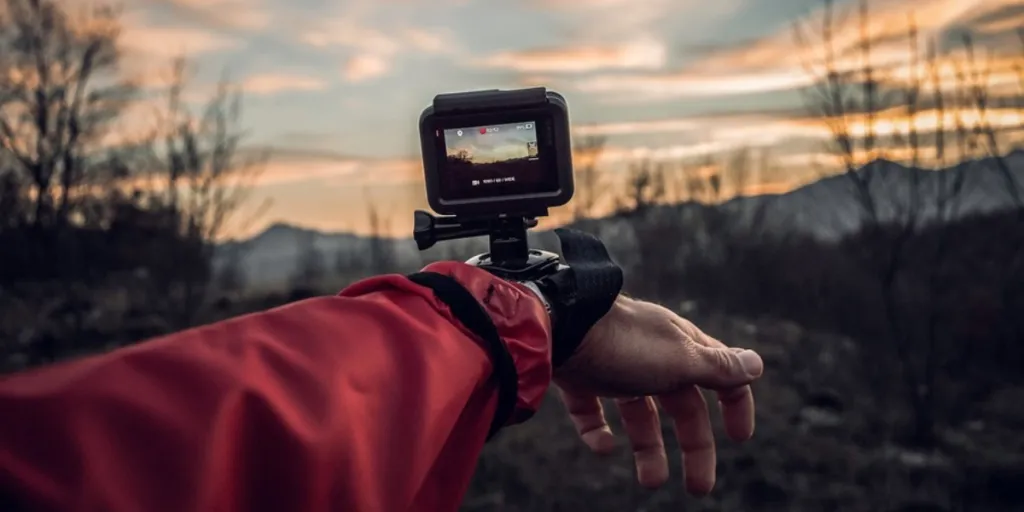Capturing smooth and clear shots has become a must in visual storytelling. As the demand for professional images and videos continues to soar, there has also been an inevitable growth in the camera stabilizer market. These tools allow content creators and individuals to push the boundaries of creativity and develop breathtaking visuals.
In this article, we’ll delve deep into the camera stabilizer retailing business to help interested enterprises make the most out of it.
Table of Contents
The camera stabilizier global market size
Reasons behind the growth of the camera stabilizer market
Camera stabilizer options
Things to consider when choosing a camera stabilizer
Conclusion
The camera stabilizer global market size
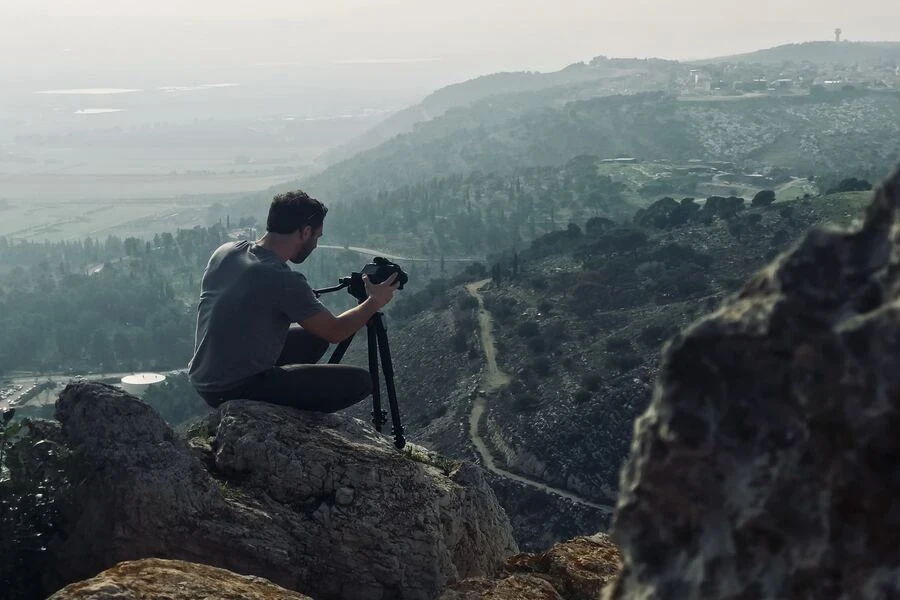
Camera stabilizers, also known as stabilizing mounts, are tools used to keep cameras steady while taking pictures or recording videos. They help reduce unintentional movements, allowing photographers and videographers to capture clear and stable images.
The demand for camera stabilizers has increased with the production of different video content, the growing popularity of amateur-made content online, and the continued boon of film franchises at the cinema. Both novice and professional cinematographers are continuing to push the boundaries of creativity, and camera stabilizers are crucial in capturing stunning and imaginative shots with smooth motion. According to one research report, the camera stabilizer market is projected to reach US $6.44 billion by 2032, with a compound annual growth rate of 4.29%.
Reasons behind the expansion of the camera stabilizer market
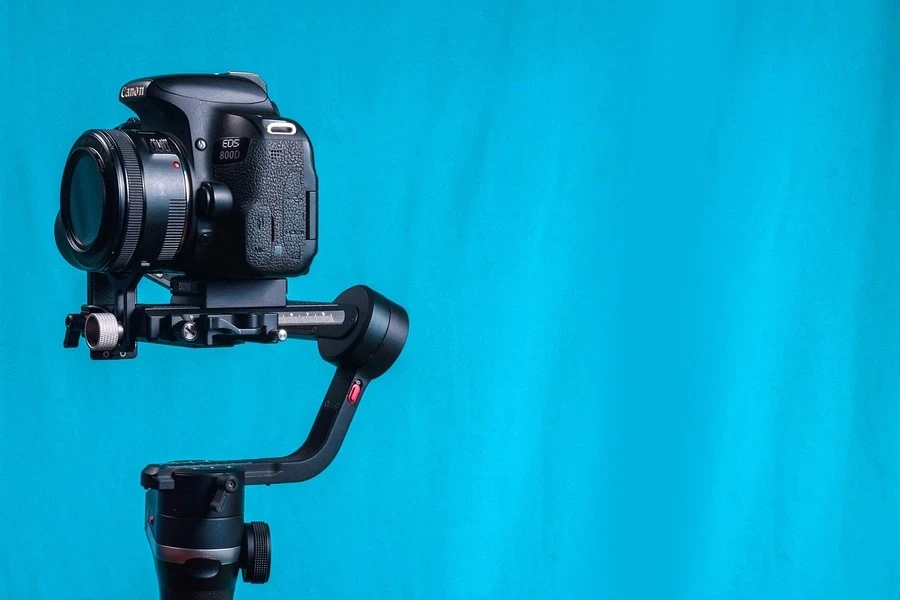
Over the past few decades, the global entertainment sector has witnessed enormous growth. Independent filmmakers, online content creators, and even home users are increasingly interested in producing impeccable images and videos.
The market for camera stabilizers is expected to grow as the range of cameras, such as point-and-shoot, mirror-less, and smart cameras, further expands. In addition, as camera technology advances, the cost of entry-level and mid-range cameras has decreased. This has made them more accessible to a broader audience, and when more people invest in cameras, they are more likely to seek solutions to improve the quality of their images and videos.
Camera stabilizers’ compatibility with zoom controllers and transmitters has also elevated their potential. From filming events to creating content, these devices have made it possible for even your average Joe to be able to take flawless photos and videos.
While stabilizers were initially expensive and inaccessible to hobbyists, their prices have drastically fallen as the tech has advanced and competition has grown among major companies in the market. This increase in affordability has expanded the target market and made way for increased sales.
Camera stabilizer options
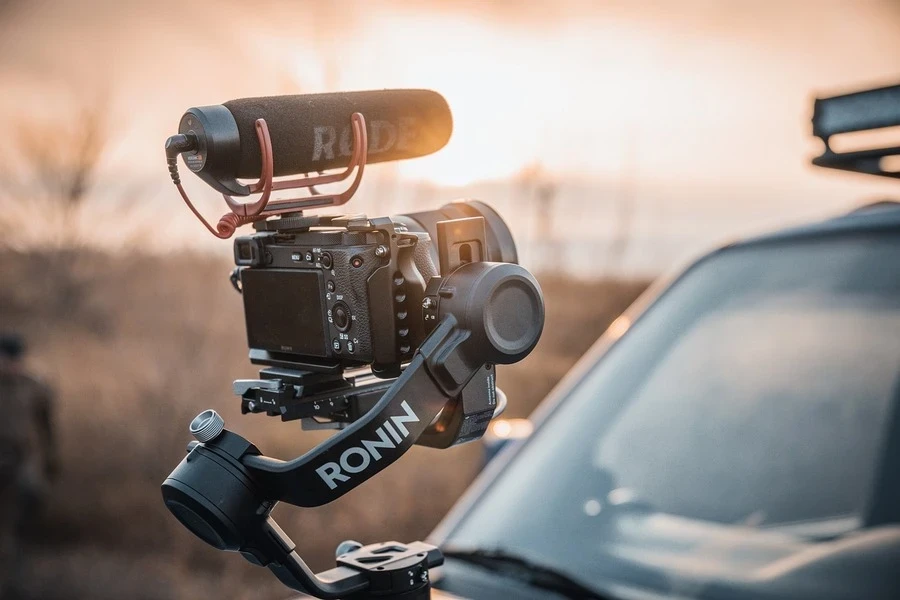
There are various camera stabilizer options available on the market. Some are attachable and detachable, others are hand-held, and some can even fly!
Below we list some camera stabilizer types and their mechanisms:
Top-handle stabilizers
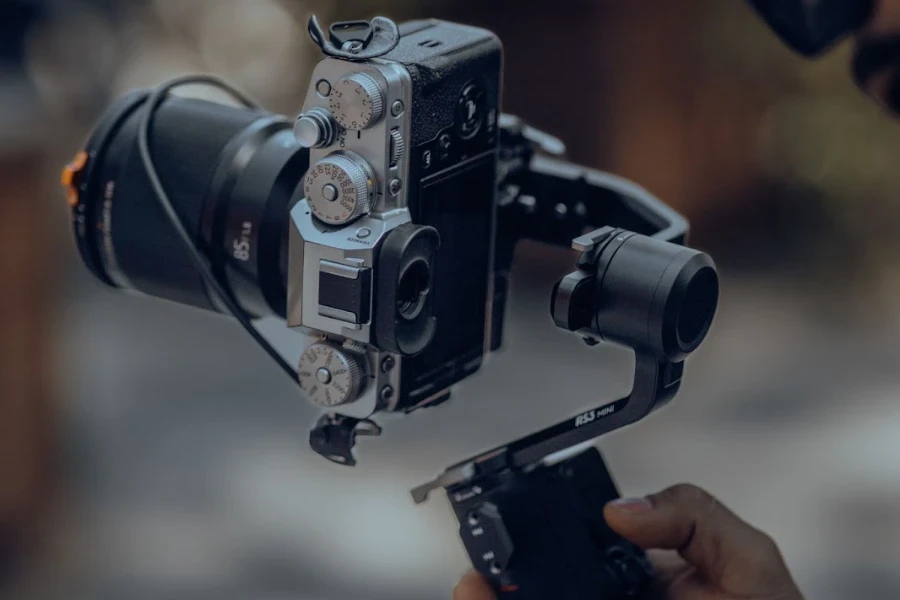
Top-handles stabilizers are the simplest stabilizers available on the market. The L-shaped handle allows users to attach their camera and hold it steady via the adjoining handle.
This design is best for filmmakers wanting to take low-angle shots and of moving objects. An ideal design should provide a comfortable and secure grip for the camera operator. Besides being simple, top-handle stabilizers are also some of the cheapest models out there.
The pros and cons of using top-handle stabilizers include the following:
Pros
- It is easy to shoot at more difficult angles, for example, upward shots from a low angle
- The camera rig is extremely convenient and comfortable, offering opportunities for shooting on the fly
- These stabilizers are quite pocket-friendly
Cons
- Not suitable for complex filming needs
- The handle restricts camera usage
Hand-held stabilizers
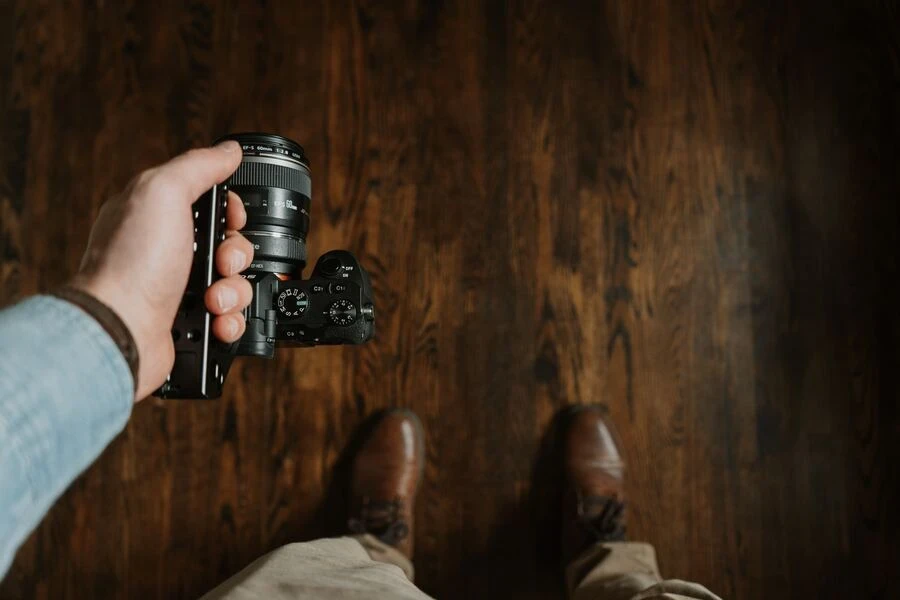
These stick-like stabilizers are also pretty popular among content makers thanks to their ease of use making hand-held shots. They’re particularly useful in shots that must follow actors or the action. Because these stabilizers allow the camera to be rotated about its axis, while a stick expansion helps add weight, they create an incredibly fluid gliding effect.
Pros
- Allows multi-direction shooting while maintaining stability
- Different varieties are available catering to different budgets
Cons
- Stabilizer weight can sometimes make them challenging to carry
- Some cameras are not designed to be held by hand, thus making these stabilizers unfit for use
X-grip stabilizers
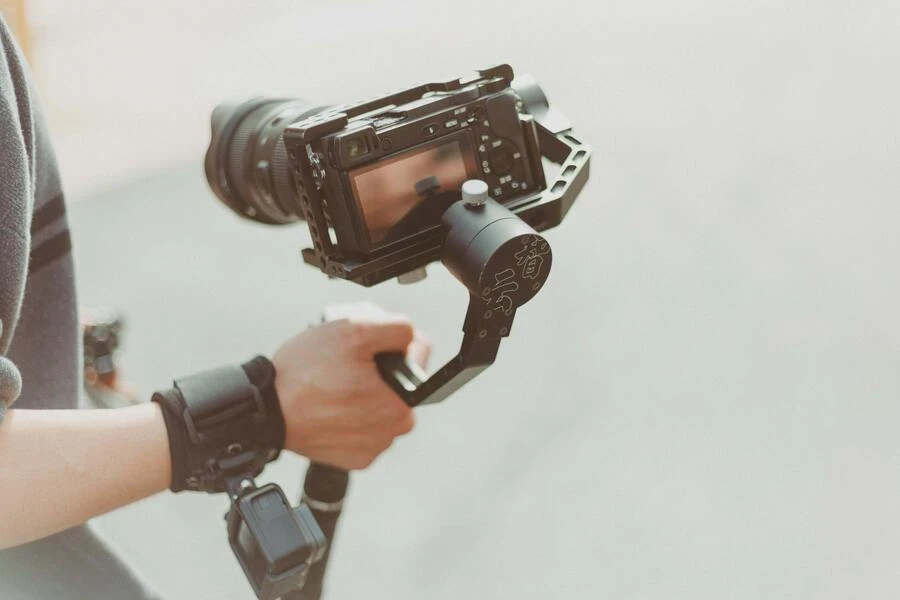
X-grip stabilizers are mounted on a single arm so that the camera remains parallel to the cinematographers body, allowing them to maintain a low or high angle when filming sports such as racing, skateboarding, skiing, snowboarding, etc. There are multiple types of X-grip stabilizers, which utilize a U-joint that offers a double-handed grip.
Some such “U-grip” models offer cushioned finger pads, providing a more secure grip during lengthy takes. It is wise for retailers and wholesalers to invest in sturdy and comfortable X-grip camera stabilizers for those consumers looking for durability and comfort.
Pros
- One of the most cost-effective models available on the market
- Enhanced comfort courtesy of finger pads
- Best for shooting events that include rapid movement
Cons
- Great for shooting on the go but have some off-road limitations
3-axis gimbals

Three-axis gimbals, where “3-axis” refers to the number motions the camera can take, use brushless motors to adjust the camera’s position, including up, down, left, and right and front and back. Handheld 3-axis gimbals offer a vibration-free camera shooting experience, meaning users and capture action-laden videos while they themselves run alongside. In addition, wearable 3-axis gimbals help shoot immersive takes.
Pros
- Multi-directional movement helps shoot different types of action
- Footage is super smooth
Cons
- It requires an additional power source to run its sensors, motors, and controllers
Vest system stabilizers
Stabilizer vests, because of their ability to attach to the cameraman’s body, allow for a versatile shooting experience. Using a vest rig allows camera operators to shoot claustrophobic scenarios without cramming camera equipment in a small space. While the may require some initial practice, shooting becomes quite easy once the operator learns to handle the equipment.
Pros
- Compact and portable
- Allows shooting of crisp footage without exhausting the camera operator
Cons
- Can be challenging to use for the beginners
Things to consider when choosing a camera stabilizer
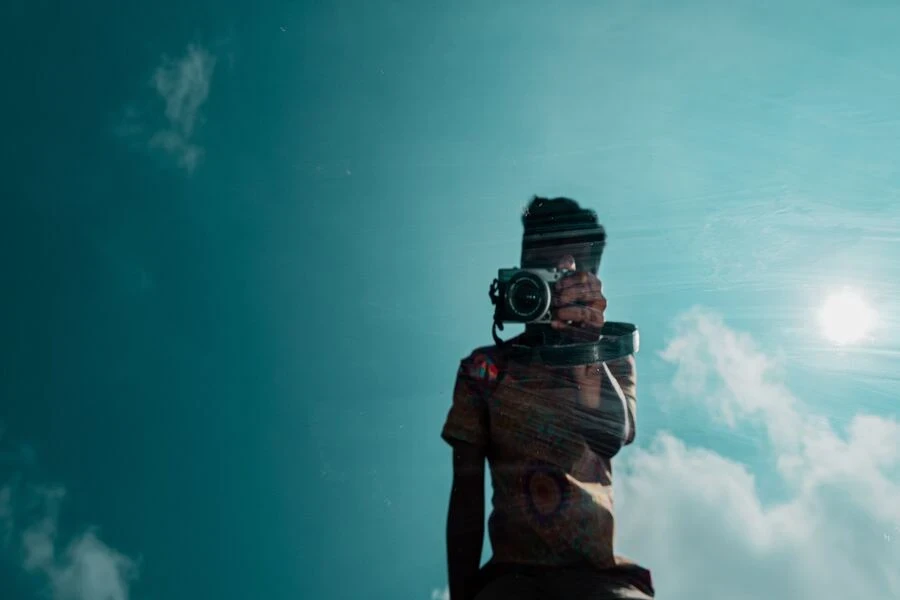
There are several factors to consider when investing in a camera stabilizer, including:
Size and weight
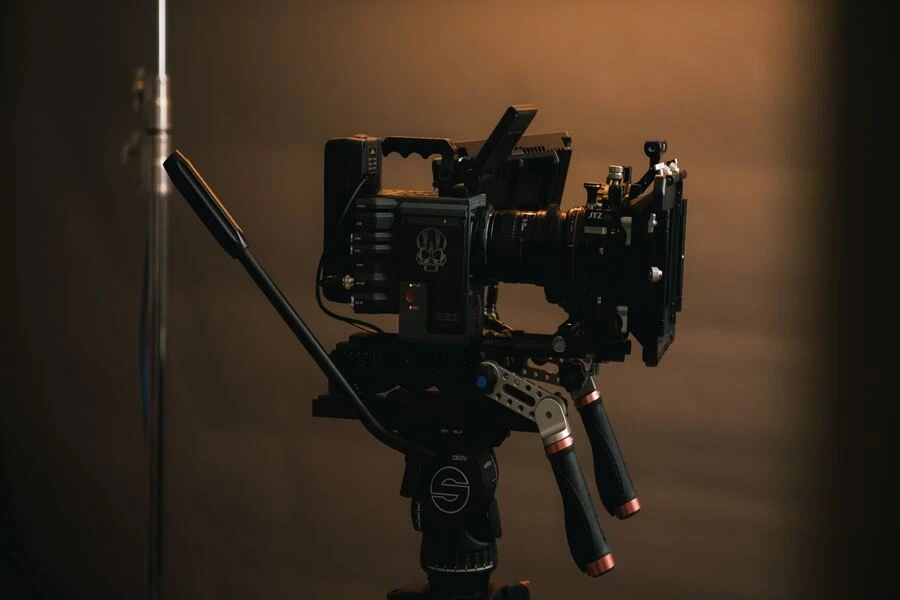
It is important to consider the camera stabilizer’s size and weight, especially if you need to operate a larger camera, which will need a larger stabilizer to counterbalance it for better use.
Shooting needs
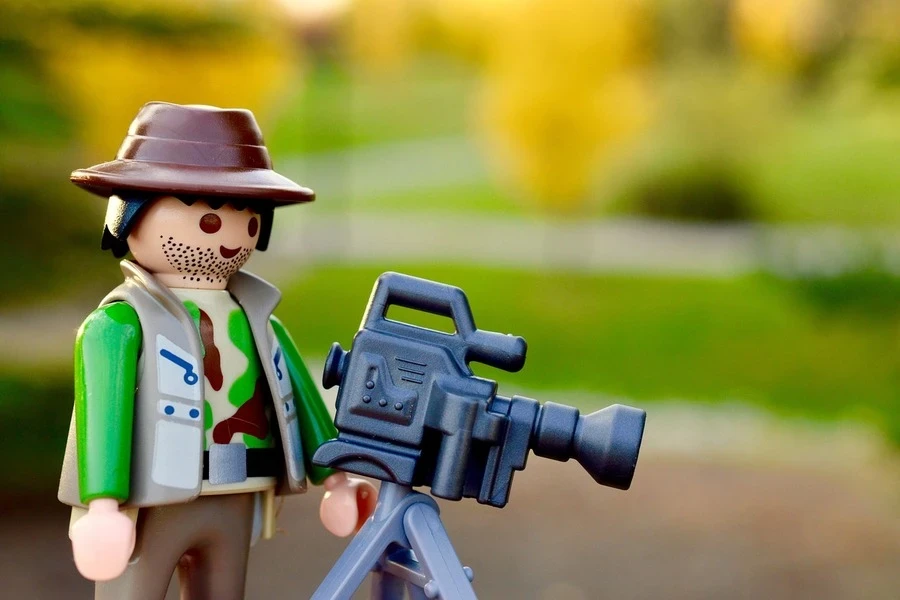
Who the camera is for and what kind of films they intend to shoot will determine the type of stabilizer they’re looking for. For example, if the target users are vloggers, they will most likely require something akin to a 3-axis camera stabilizer, while users who mostly want to take still images will want to opt for handheld stabilizers.
Portability
Some stabilizers are light and can fit in your pocket, while others are heavy and require a customized case. If the intended customers travel often, they will weigh up the perceived portability of the camera mount they buy.
Budget

Camera stabilizers can range from US $15 to US $1,000, so it is vital to first evaluate the general budgetary limits of your customers before stocking up.
Other than price, choosing the right camera stabilizer ultimately involves finding one that suits specific shooting requirements, budgets, and preferences. A few other things to consider include the stabilizer’s compatibility with different cameras and accessories, as well as whether they feature motorized or non-motorized components. To ascertain such factors, research and read camera stabilizer reviews to better understand their performance and user experience.
Conclusion
Camera stabilization technology has seen significant progress in recent years, and is now available in various configurations depending on the user’s needs. Because there is no one-size-fits-all when it comes to camera stabilizer, retailers in this segment should invest in camera mounts only once they’ve studied their customers’ profiles. They must also read reviews about different camera types and their manufacturers before making a final call. Browsing the models are available on Alibaba.com can also help buyers better understand which products are trending.
